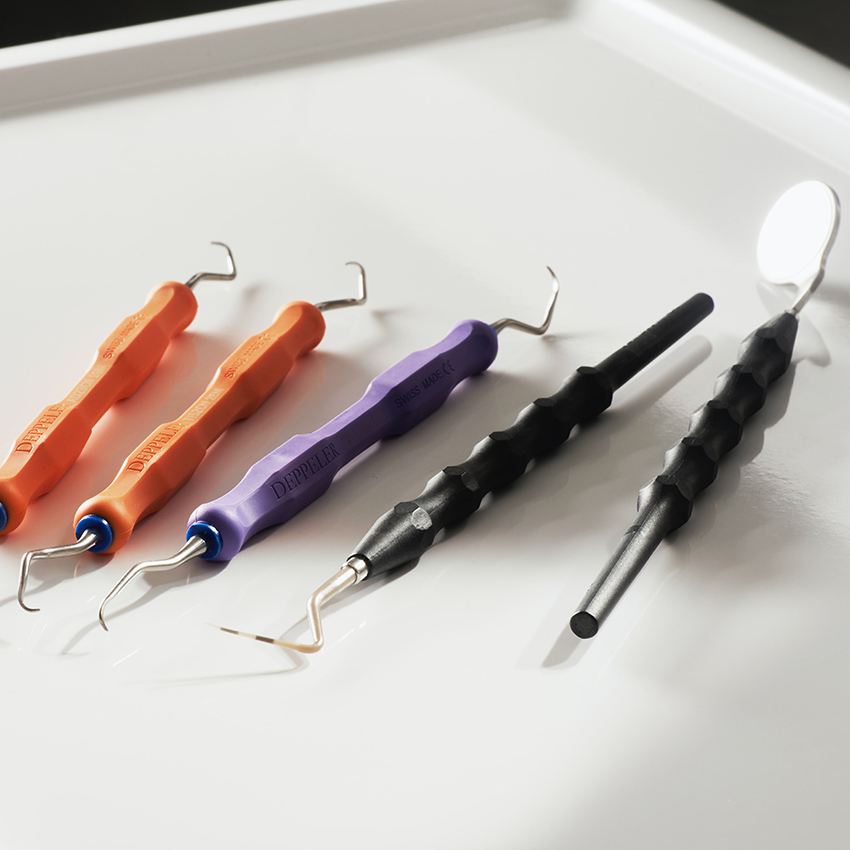Dental amalgam fillings, also called silver fillings or silver amalgam fillings, were previously the standard method for treating dental caries (tooth decay). Decades ago, they were prevalent because they were inexpensive, and amalgam fillings have good durability.
Recently, amalgam fillings have been falling out of favor because a growing body of research has shown that they can actually result in mercury exposure and cause adverse health effects in patients who have them.
Are your fillings compromising your oral health and exposing you to additional health risks? Keep reading to find out about mercury in your mouth and alternative types of fillings.
What materials are in dental amalgam?
Dental amalgam is made from a mixture of elemental mercury (liquid mercury), copper, silver, and tin that has been used for over 150 years in dental restorations, or fillings. Most of the material in amalgam is mercury — around 50%.
The use of dental amalgam has declined recently for two reasons:
- Increased awareness of the dangers of mercury amalgam fillings.
- The development of composite filling materials that are remarkably strong, long-lived, and require less drilling.
How long do amalgam fillings last? Amalgam fillings last 10 to 15 years on average, although some can last for up to 25 years.
Effects Of Mercury
Exposure to mercury is a significant health risk. There are 3 main types of mercury:
- Inorganic mercury, found in mercury compounds in nature
- Elemental mercury, present in amalgam fillings
- Methylmercury, a potent neurotoxin that makes some meat like tuna, for example, unsafe to eat in large quantities
Some forms of mercury are more toxic to humans than others. Elemental mercury and methylmercury are the most toxic, particularly mercury vapors from elemental mercury.
Side effects of mercury exposure include:
- Headaches
- Tingling or “pins and needles” sensation in the hands and feet
- Impaired movement, speech, or hearing
- General muscle weakness
- Insomnia
- Trouble with coordination
- Problems with peripheral vision
- Poor mental function
- Mood swings, irritability, and other emotional changes
Most of these effects are due to mercury’s neurotoxicity; it is incredibly harmful to the brain and nervous system.
Risks Of Amalgam Fillings
More and more dental professionals have become aware of the risks of amalgam restorations.
The most significant risks of getting an amalgam filling are:
- Exposure to mercury vapor: The elemental mercury in amalgam easily turns into mercury vapor, which is acutely toxic.
- Organ damage: The mercury in dental amalgam can travel throughout the body into different organs. For example, patients who have more amalgam fillings have higher amounts of mercury in their brains and kidneys.
- Nervous system damage: Mercury exposure has detrimental effects on the nervous system because it’s acutely toxic to nerve cells.
- Neurobehavioral changes: Mercury amalgam fillings have been linked to changes in behavior, particularly in children with certain gene variants.
The American Dental Association (ADA), Centers for Disease Control and Prevention, and World Health Organization still state that mercury amalgam fillings are safe. However, more scientific evidence is published each year that shows the danger of mercury amalgam for your health.
Do amalgam fillings cause health problems? Yes, amalgam fillings cause health problems, particularly problems with the nervous system and kidneys. They’re also quite dangerous for young children and developing fetuses, which is why pregnant women should avoid them.
What are the most common symptoms of dental mercury poisoning? The most common symptoms of dental mercury poisoning are headache, changes in mood (increased anxiety, irritability, or depression), memory problems, and numbness.
Who should avoid amalgam fillings?
In September 2020, the U.S. Food and Drug Administration (FDA) issued revised recommendations for using mercury amalgam fillings, recommending that patients in high-risk groups should opt for alternative restorative materials when getting fillings.
With all of the risks associated with mercury fillings, most biological dentists recommend that everyone avoids them. Some people, however, are at a greater risk of developing adverse effects from amalgam fillings than the general population. These people include:
Pregnant Women, Women Planning to Become Pregnant, and Women who are Nursing
Mercury exposure is particularly detrimental to a developing fetus’ brain. Mercury can pass through the placental barrier and enter fetal brain cells, where it has neurotoxic effects.
Children
Children also should not be given mercury amalgam fillings, particularly very young children under 6. Their brains are still developing quickly, and even small amounts of mercury can have a negative effect.
People with Neurological Disorders
Anyone with neurodegenerative diseases such as Alzheimer’s, Multiple Sclerosis, or Parkinson’s should avoid amalgam fillings. Because mercury is so acutely neurotoxic, it can cause even more potent effects in patients with these disorders.
People with Allergies and Sensitivities to Metals
Anyone who has a sensitivity or allergic reaction to mercury or the other metals in amalgam fillings should avoid getting them. Anyone with a sensitivity to heavy metals should also opt for a different type of filling material.
People with Kidney Problems
Mercury exposure also causes damage to the kidneys. Anyone with kidney disease or poor kidney function shouldn’t get mercury amalgam fillings, since additional mercury exposure could further damage their kidneys.
People With Bruxism
Anyone who grinds their teeth (bruxism) shouldn’t get amalgam fillings. Tooth grinding can damage the filling, releasing small amounts of mercury into the mouth, where it’s easily ingested and spread to the brain, kidneys, and other parts of the body.
Anyone Concerned About the Appearance of Their Teeth
Let’s be honest: amalgam fillings don’t look like natural teeth. The dark silver amalgam makes teeth look discolored and dirty. If you want a beautiful bright, white smile, definitely don’t get amalgam fillings.
Do amalgam fillings look bad? Many people think that amalgam fillings look bad. They’re noticeable because they’re much darker than your natural tooth, and they can make your natural teeth look gray or even blackish.
Removing Amalgam Fillings
Some dentists believe that amalgam fillings shouldn’t be removed because the removal process can damage existing tooth structures and potentially expose you to more mercury. But, the longer your mercury filling stays in the mouth, the more you’re exposed to mercury’s toxic effects.
At Rejuvenation Dentistry, we understand that the benefits of amalgam removal outweigh the risks. Our highly-trained staff specializes in the safe removal of amalgam fillings using SMART technology, which minimizes your exposure to any mercury in the filling.
Here’s how we safely remove mercury amalgam fillings at Rejuv Dentistry:
- First, we set you up in a room that has special air filters to remove any potential mercury vapors and particles from the air.
- You’ll put on a protective gown and hair net to make sure no mercury gets on your hair or clothing.
- You’ll be given an absorbent to rinse with and swallow. The adsorbent will catch any stray mercury in your mouth during the removal process.
- We place barriers around your mouth and head to protect both you and our dental professionals from exposure to the mercury in your filling. You’ll also be given a nasal oxygen supply to help you breathe clean air.
- You’ll have a high-volume air filter next to your mouth to help filter out any mercury vapor.
- We’ll clean your teeth with ozonated water to sterilize your mouth and reduce your risk of infection.
- We numb the tooth that has the amalgam filling and carefully remove the filling in large chunks, ensuring that we contain all of the amalgam material.
- Next, we rinse out your mouth and fill the tooth with a BPA-free tooth-colored ceramic filling.
- After the procedure, our staff will safely dispose of any tools or materials that may contain mercury.
- We provide nutritional support to help your body process and eliminate any mercury your body may have absorbed prior to removing your amalgam fillings.
Should amalgam fillings be removed? Yes, amalgam fillings should be removed, but only by a dentist experienced in the SMART method to minimize your mercury exposure.
Safe Alternatives To Amalgam Fillings
If you need to have a cavity filled, there are safe alternative treatment options to mercury amalgam fillings.
The safest materials for fillings include:
- Composite resin
- Resin ionomer
- Glass ionomer
- Porcelain
Make sure your dentist doesn’t use any restorative materials that contain BPA, fluoride, or other toxic chemicals. Finding a biological dentist is often your best choice because they automatically won’t use toxic materials in their practice.
These dental filling materials are vastly superior to amalgam in many ways. First, they’re biomimetic materials, which means they mimic the hardness and strength of your natural teeth, so they last a long time.
Resins, porcelain, and ionomers are also tooth-colored, so your fillings blend in with your natural teeth.
What is the difference between amalgam and composite fillings? The difference between amalgam and composite fillings is the material that’s used to fill the cavity. Amalgam is made from various metals, while composite resin is made from a plastic called acrylic resin that has been reinforced with ceramic materials.
Do dentists still use amalgam fillings? Yes, some dentists still use amalgam fillings in some areas, but many dentists have switched to using composite fillings for better results and less risk.
The Environmental Impact Of Amalgam
Mercury amalgam fillings are also very bad for the environment. When mercury makes its way into waterways or other wet environments, it is converted into methylmercury and can be consumed by animals or people.
Unfortunately, many dentists who work with amalgam aren’t careful enough with the mercury waste they create. That waste winds up in our water, landfills, and air, where it can have adverse effects on entire ecosystems.
If you want to remove and replace your amalgam fillings, it’s crucial to work with an experienced dental professional who knows how to safely remove and dispose of the old fillings. Safe and responsible filling removal keeps both you and the environment healthy.
Ready to remove your fillings? We’re experts.
As biological dentists, we know how strongly your oral health affects your overall health. If you have mercury amalgam fillings, you may consider having them safely removed by the experienced professionals at Rejuvenation Dentistry.
Our founder, Dr. Jerry Curatola, has been recognized by the International Academy of Oral Medicine and Toxicology (IAOMT) as one of the most-trusted biological dentists in America who is SMART certified to safely remove mercury fillings.
We’d love to answer any questions you have about mercury amalgam filling removal and our other biological dentistry treatments, like laser dentistry and TMJ treatment. Click here to schedule an appointment at our Manhattan or East Hampton offices today for a healthier mouth.




